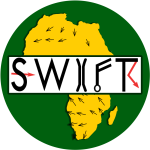Having accurate sub-seasonal forecasts for Africa (2-4 weeks ahead) has huge potential to improve the early warning of extreme, high-impact weather events. Such warnings could support crucial preparedness action in weather-sensitive sectors such as agriculture, energy, food security and disaster risk reduction. However, realising this potential not only requires accurate forecasts, but forecasts that can be appropriately applied to the decision-making context of users. Doing this effectively requires transforming the role of the user from recipient of forecast information to participant in the generation of new forecast products and tools, through a process known as co-production.
This study describes the African SWIFT (Science for Weather Information and Forecasting Techniques) sub-seasonal forecasting testbed which brings together researchers, forecast producers and forecast users from a range of African and UK institutions (Photos). This testbed is piloting the provision of forecast data directly to African Meteorological Agencies and Organisations so that they can co-produce bespoke forecast products with their users on these timescales for the first time. Having direct access to the data has been transformational because it has allowed user-guided improvements to the scale, timing, visualisation and communication of forecast products to improve their appropriate use by decision-makers across Africa.
Some key initial lessons for effective co-production have been emerging from this process. First, co-production of forecast products is resource-intensive, so it is critical to ensure there is sufficient resource to support the process. Second, co-producing new forecast products is, for most, a new way of working and requires capacity building of all groups to be done effectively. Third, evaluation of new forecast products is crucial and should be an ongoing process combining measures of forecast accuracy with feedback from decision-makers.
The provision of these new, pioneering user-tailored forecast products can only continue beyond the life of this project if (i) access to the real-time data is continued; and (ii) the experiences and learning of individuals in this pilot can be scaled and integrated into standard operational procedures within African institutions.
For more information you can read the recent paper in Climate Services describing the co-production process in the sub-seasonal forecasting testbed:
https://www.sciencedirect.com/science/article/pii/S2405880721000340
Or read the related policy brief which explains how exploiting sub-seasonal forecast predictability in Africa is key to sustainable development. This policy brief finishes with a number of recommendations for the international community to ensure project-initiated services such as this can be sustained and supported in the future.
https://eprints.whiterose.ac.uk/177238/



